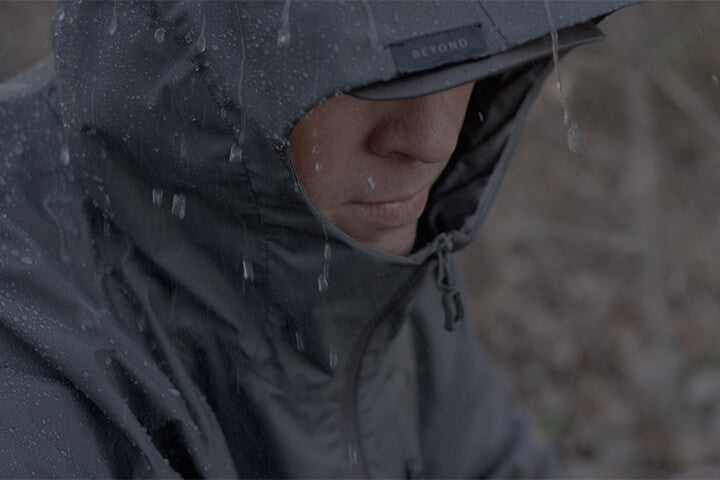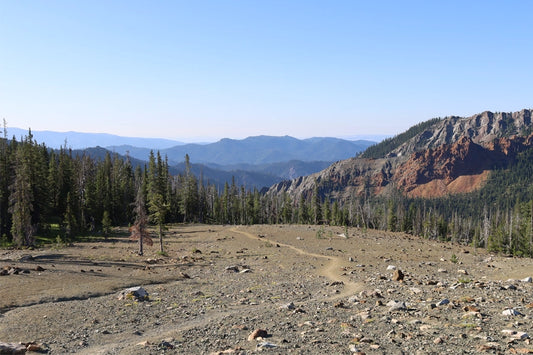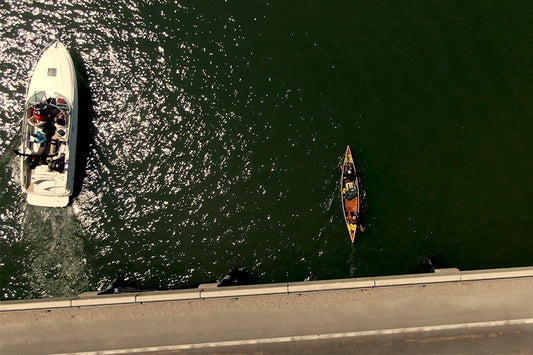Rain often feels like a fairly typical part in the lives of many of us, depending on where you live. And for many of us, that usually means remembering an umbrella, a hooded jacket, and to leave the house a little earlier to account for slower traffic. Rain in wild places, on the other hand, can completely define your adventure. It can also become a serious safety risk if you aren’t properly prepared for it. Below are the six considerations you need to account for before setting out into wild, rainy places.
Layer according to the weather and activity
Weather protection is not all created equal. Different layers and different shells are suited for particular conditions and activity levels, and planning against both is important for optimizing your experience. If you expect to be consistently on the move, reach for a hooded softshell jacket that’ll breath, dry quickly, and ensure mobility; the Modus Light Softshell K5 Jacket is an excellent choice for warmer weather, while the insulated Aptus Hybrid Softshell K5 Jacket is a better bet for cooler conditions. If the forecast expects a downpour and/or you’re expecting to be hunkered down most of the time, waterproof hardshells like the upcoming Arx 2.0 K6 Rain Jacket and Pant will be the better choice.

Waterproof your EDC bag
Wet-weather preparedness doesn’t stop with your personal coverage; your gear isn’t going to like the rain any better than you. Ensure that your everyday carry bag is well-protected and that the gear stowed within is ready for use at a moment’s notice with waterproof coverage. We recommend the Pack Fly from Mystery Ranch; built with rugged, waterproof 70-denier fabrics and offered in three sizes, you can protect the EDC bag you love already instead of hunting for an expensive new replacement.

Learn how to start a fire in the rain
No matter how thorough your moisture-prevention game is, you’ll still want to have access to a fire at some point for warmth, drying yourself and your clothes, and preparing food. Save money by waterproofing your own matches with turpentine, nail polish, or candle wax, and for extra precaution pack a lighter and a spark rod as well. Make sure you’ve got the right tools for preparing wet wood, including a good sharp knife, a folding saw, and a hatchet; with practice and patience you’ll be able to retrieve dry wood from the center of otherwise wet tree limbs.

Choose your camping spot carefully
If you plan on camping during your trip, pack a waterproof tarp to create a covered common area. Besides offering a space outside of the tent(s) for your group to congregate, it’ll also allow wet clothes to dry out. Make sure there isn’t metal in your tent, umbrella, or any other camp gear in case of lightning, and don’t set up camp on high ground or underneath a tree. Also avoid settling down near standing bodies of water; lightning is still a risk there, as is flooding.

Prepare against navigating in the rain
Sometimes circumstances won’t allow you to stay in one place, and the last thing you want is to get lost during inclement. Use laminated maps, and track your position with compass notes and trail markers. Find yourself a walking stick to probe ahead of your steps; it’s all too easy to take a wayward step in pouring rain. And if visibility is compromised, include backup signaling options in case your phones aren’t an option; think whistles or even a smoke signal.






0 Comments